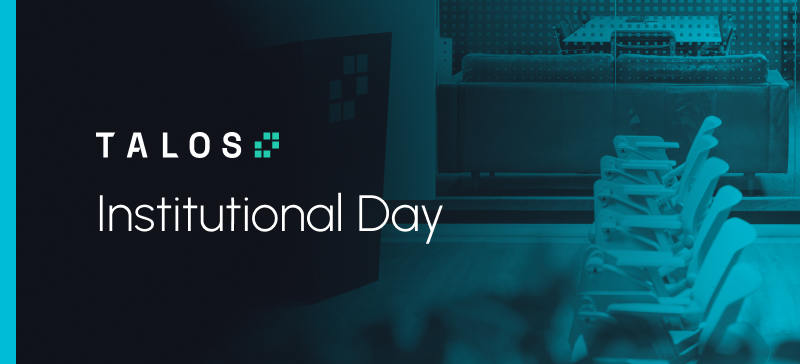ETH Finds Its Flow, Spot ETFs Follow, and Bullish Bets Pile In
Month in Review
ETH Finds Its Flow, Spot ETFs Follow, and Bullish Bets Pile In
Introduction
Month in Review
- BTC ETFs added $6.1B over the past 30 trading days, while ETH ETFs outpaced with $7.8B in inflows
- Circle rolled out plans for Arc, a purpose-built Layer 1 chain aimed at powering stablecoin payments, FX and capital markets activity
- Bullish made a splash in its NYSE debut, with shares soaring after the crypto exchange priced its IPO well above expectations
Big flows, big tech, big chain – The ETH(A)REALM begins?
Crypto markets traded in the green over the past 30 days, with total market capitalization surpassing the $4 trillion mark. Bitcoin dominance slipped from above 60% to just below, reflecting the strength of altcoin performance. Among the blue chips, Bitcoin posted a modest monthly gain of 3.5%, while Ether stole the spotlight with a standout 60% rally. In the US spot-only ETF universe, Bitcoin ETFs attracted $6.1 billion in cumulative net inflows over the period. However, ETH ETFs outpaced their BTC counterparts, drawing in $7.8 billion in net inflows, reflecting a shift in investor appetite toward Ethereum exposure. Standard Chartered analysts sharply raised their ether price targets on Wednesday, citing a dramatically improved outlook driven by surging corporate treasury demand, strong ETF inflows, the advance of US stablecoin legislation, and renewed progress on Ethereum’s technical roadmap.
Corporate ETH holdings surged past 3.5 million ETH this week, with crypto treasury data showing companies at the time of writing hold a combined 3.57 million ETH, worth approximately $13 billion. BitMine Immersion Technologies led the pack, increasing its holdings by over 600% to 1.2 million ETH in just over a month. SharpLink Gaming followed with 598.8K ETH after boosting its treasury by nearly 177%, while The Ether Machine grew its stack by 8% to 345.4K ETH. Together, these three firms account for more than half of the ETH held by the top 10 corporate treasuries, which collectively hold over 3 million ETH, or roughly 2.6% of the total supply.
Policy is emerging as another key catalyst. The GENIUS Act signed into law by President Trump in July establishes the first federal framework for stablecoins and is expected to channel even more activity to Ethereum. That’s because over half of all stablecoins already operate on Ethereum, and they account for roughly 40% of all blockchain fees, according to Standard Chartered’s report. The US Treasury Secretary Scott Bessent projects the stablecoin market could balloon to $2 trillion by 2028, fueling both direct revenue from fees and broader activity across Ethereum-based decentralized finance, where nearly 65% of total value locked resides today. US dollar-pegged stablecoins dominate this trend, with over $131 billion, more than half of the $254 billion total circulating on Ethereum alone.
On the technology front, the renewed momentum from the Ethereum Foundation and broader ecosystem contributors, including plans to scale base layer throughput. The aim is to support a model where high-value transactions settle on Layer 1, while high-volume activity shifts to Layer 2 solutions like Base and Arbitrum. This evolving architecture could bolster Ethereum’s long-term potential to anchor more real-world financial activity, offering a constructive tailwind for its valuation.
Ethereum’s transaction activity has been on a steady rise, nearing its all-time high of 1.9 million daily transactions set in January 2024. According to the data from TheBlock, the 7-day average recently climbed to 1.74 million, eclipsing the previous record of 1.65 million from May 2021. This uptick in on-chain activity follows new guidance from the SEC’s Division of Corporation Finance, which clarified that certain liquid staking services and “staking receipt tokens” may not qualify as securities under the 1933 Securities Act, provided they meet specific conditions. At the same time, Ethereum has reclaimed the lead over Solana in decentralized exchange (DEX) volumes for the first time since April, driven by a shift in momentum away from Solana-based memecoins and toward ETH amid growing institutional interest. On the infrastructure front, the Ethereum Pectra upgrade has delivered a meaningful capacity boost to the mainnet, increasing throughput and reducing congestion. As a result, stablecoin transfer costs have consistently fallen below $1, making DeFi interactions and peer-to-peer payments significantly more accessible.
Treasuries take the alpha crown – So what’s DAT all about?
Fresh off its $1.2 billion IPO in June, Circle on Tuesday unveiled plans for Arc, its own stablecoin-focused Layer 1 blockchain, with a public testnet launch expected this fall. Designed as an enterprise-grade platform for stablecoin payments, FX, and capital markets activity, Arc will be EVM-compatible and integrate directly with Circle’s ecosystem. According to the company, Arc will feature USDC as native gas, a built-in FX engine, sub-second settlement, opt-in privacy, and seamless interoperability with partner blockchains.
Circle’s move follows a broader trend, with rival issuer Tether also backing the development of stablecoin-centric chains, including Stable and Plasma. On the financial front, Circle’s Q2 results showed strong momentum: USDC in circulation grew 90% year-over-year to $61.3 billion, rising further to $65.2 billion as of August 10. Total revenue and reserve income climbed 53% to $658 million, while non-interest revenue jumped 252% amid growing demand for subscriptions, services, and transaction volumes. However, the firm posted a net loss of $482 million, driven by $591 million in IPO-related non-cash charges, primarily $424 million in stock-based compensation and a $167 million mark-to-market adjustment on convertible debt. Adjusted EBITDA rose 52% year over year to $126 million.
The IPO wave didn’t stop with Circle. Shares of crypto exchange Bullish (BLSH) surged above $107 on their NYSE debut Wednesday, nearly tripling their IPO price of $37 which had already come in above the expected $32–$33 range. That pricing gave the Cayman Islands-based firm a market cap of $5.4 billion. Bullish, which owns CoinDesk, expanded its offering to 20.3 million shares earlier this week as investor demand proved stronger than anticipated. BlackRock and Ark Investment Management were among those circling the deal, signaling interest to buy up to $200 million in shares. The debut comes amid surging institutional interest in crypto, with Wall Street leaning in just as US policymakers inch closer to a clearer regulatory framework for the space.
In recent months, nearly every major crypto fundraise has revolved around digital asset treasuries (DATs), and VCs are leaning in hard. Pantera Capital disclosed that it has deployed over $300 million into DATs so far, backing public companies that hold crypto on their balance sheets. The thesis? DATs can compound NAV per share by generating yield and accumulating more tokens over time, potentially outperforming passive spot holdings or ETFs.
As interest in DATs has surged, traditional crypto venture rounds have noticeably thinned. According to The Block, non-DAT startup deals and token sales have dropped from 1,933 to 856 year-over-year, a 56% slide. And while overall funding has held near $8 billion YTD, that figure is skewed by Binance’s $2 billion raise in March. Excluding that, capital deployed into traditional rounds sits closer to $6 billion, down 26% from 2024. Why the pivot to DATs? VCs cite instant mark-to-market pricing, better liquidity, and the ability to raise at a premium to NAV, fueling a flywheel of capital raises, crypto purchases, and NAV growth. When a DAT trades above its market net asset value (mNAV), the firm can issue more shares, buy more crypto, and further increase mNAV per share.
Today, liquid hedge funds are the dominant players in this space, but some venture firms are also using DATs to park dry powder while waiting for better early-stage opportunities. Still, as Neoclassic Capital’s Michael Bucella noted, much depends on whether mNAV premiums in both bitcoin- and altcoin-heavy DATs can hold. Meanwhile, VCs are demanding stronger fundamentals from startups – protocols with real revenue and token value capture, not just momentum. Combine that with tighter fundraising conditions for smaller funds, and the pool of backers for early-stage crypto founders continues to shrink.
Markets are rewarding these companies for now, and that’s fueling the surge. Many DATs are trading above the value of their underlying crypto because the model offers a path to faster growth. Investors see a way to get more than just price exposure: they’re buying into the idea that it’s possible to accumulate more bitcoin (or ETH, SOL, etc.) per share over time. Some of the premium is also about access. Institutional investors that can’t hold crypto directly are using these equities as a proxy. Bitcoin was the original play, but newer DATs are adding ether, Solana, XRP, and other assets to their balance sheets, driven by access, staking yields, and asset volatility.
But the risk isn't just about prices. It’s structural. If a DAT trades below NAV, the whole flywheel can stall: capital dries up, stock slumps further, and confidence unravels. These premiums are starting to echo the GBTC trade from the last cycle. And when too many crowd into a premium play, markets eventually find a way to squeeze it out.
DISCLAIMER: The views and opinions expressed herein are those of the author(s) and do not necessarily reflect the views of Talos Global, Inc. or its affiliates (collectively, "Talos") and summarizes information and articles with respect to cryptocurrencies or related topics. This material is for informational purposes only and is only intended for sophisticated institutional investors, and is not (i) an offer, or solicitation of an offer, to invest in, or to buy or sell, any interests or shares, or to participate in any investment or trading strategy, (ii) intended to provide accounting, legal, or tax advice, or investment recommendations, or (iii) an official statement of Talos. No representation or warranty is made, expressed or implied, with respect to the accuracy or completeness of the information or to the future performance of any digital asset, financial instrument or other market or economic measure. The information is believed to be current as of the date indicated and may not be updated or otherwise revised to reflect information that subsequently became available or a change in circumstances after the date of publication. Talos and its employees do not make any representation or warranty, expressed or implied, as to accuracy or completeness of the information or any other information transmitted or made available. Investing in cryptocurrency comes with risk. Certain statements in this document provide predictions and there is no guarantee that such predictions are currently accurate or will ultimately be realized. Prior results that are presented here are not guaranteed and prior results do not guarantee future performance. Recipients should consult their advisors before making any investment decision. Talos may have financial interests in, or relationships with, some of the assets, entities and/or publications discussed or otherwise referenced in the materials. Certain links that may be provided in the materials are provided for convenience and do not imply Talos's endorsement, or approval of any third-party websites or their content. Any use, review, retransmission, distribution, or reproduction of these materials, in whole or in part, is strictly prohibited in any form without the express written approval of Talos.
Latest insights and research
Request a demo
Find out how Talos can simplify the way you interact with the digital asset markets.






